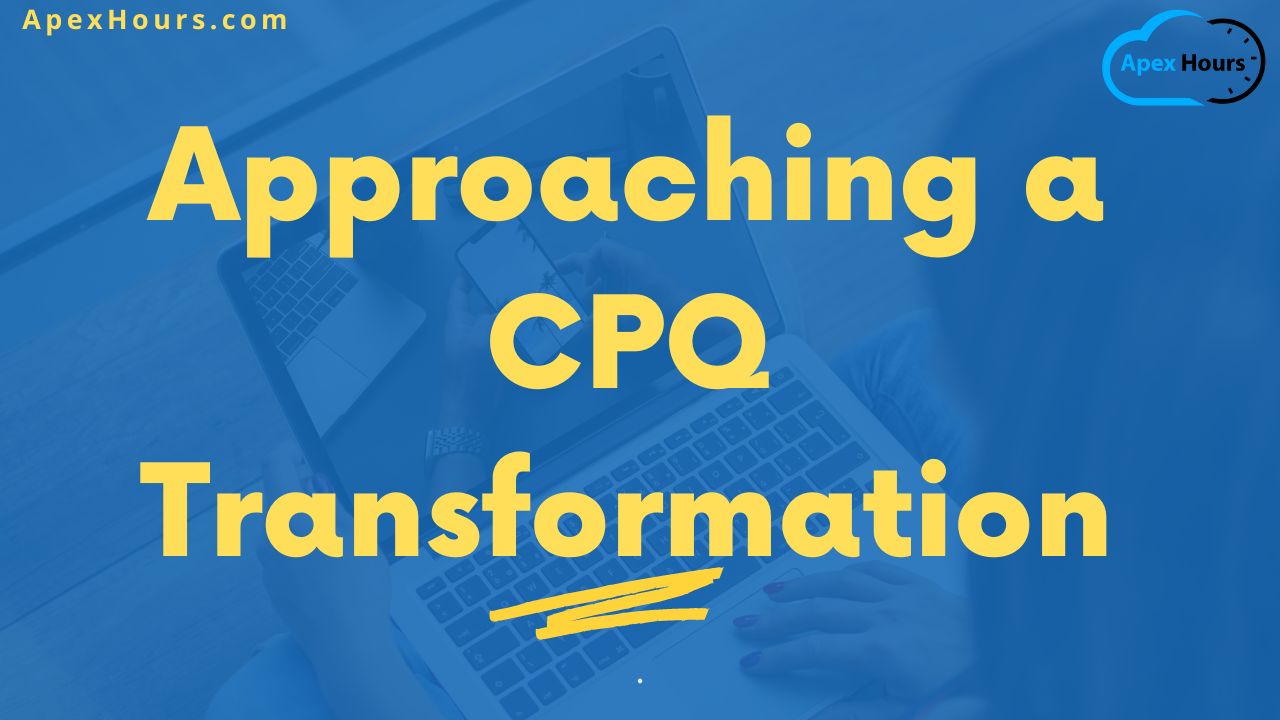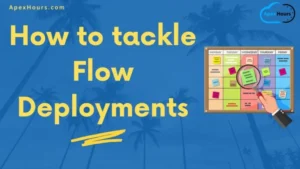We all have heard “disruption”, “digital transformation”, “Agile” and all such buzz words- one such buzz is “CPQ”. This blog will unwrap the complex CPQ world for Apex hour’s readers. What really is CPQ? This is one of the most complex areas and domains and the most needed functionality for any B2B, B2C functions. Let see the Approaching a CPQ transformation.
CPQ is an ability to Configure, Price, and Quote. If you are a first-timer on CPQ. I am sure this blog would be very helpful for you! If you are a CPQ pro you would be able to easily correlate the approach I have mentioned here with my wide experience in this domain. Let’s get going!
The most important part for any successful CPQ transformation is the “Discovery” phase! For any B2B, B2C engagements be it a small, medium or large-scale enterprise the most challenging part of implementing your CPQ solution is to first “Thoroughly Understand” what you sell, how you sell, whom to sell, and who can sell!

This understanding not only comes from just reading and knowing the product and service specifications that your organization offers but also getting into the details of:
- What are your core services and offerings? Your differentiators?
- Since when these products have been launched?
- How does the current ecosystem work for all these products?
- How would you classify your product lines?
- Are there any specific business requirements around your product lines/ products/ services.
- What kind of product bundling capabilities, inclusion/ exclusion, quote level, line level business rules apply
- Are the selling rules changing based on your customer’s relationship level with your organization?
- Can your partners sell your product? If so, what are the business rules, restrictions, additional requirements that apply.
- Are there any products approaching end of life, getting a rebranding, have some limited features to be released, any new feature additions coming soon.
- How are you engaging and informing your customers of the changes to your products and services?
- Within your organization hierarchy what kind of user groups are responsible for these product selling, processes- like approvals, discounting, routing requests, etc.
Approaching the CPQ transformation
Approaching the CPQ transformation for your organization is one of the most crucial step / considerations, since the implications of this is going to be companywide. How your internal users use the system, how your customers use the system and how your partners (resellers, or vendors for your services) use this system- each one of them is going to get impacted.
So, starting with this digital transformation will not only need the SMEs from your organization who know your products in and out- but also a representation from each of the user groups on how the system is used today- what are the pain areas for those users, what is the to-be state that we want to achieve as an organization, etc.
Understanding the end-to-end ecosystem while undertaking any digital transformation is MANDATORY to bring in the connected and consolidated experience across.
Customer Data, CRM, CPQ, Billing, and Invoicing- all these are intertwined. In order to pick up a CPQ transformation it’s always recommended you first know the source of your customer data, if it’s a native system which is being used to maintain your customer data OR it’s an integration with Salesforce, if it’s a multi geography implementation, business rules, are there any limitations of sharing data, what kind of quotes are expected from your CPQ system for different kind of customers, etc.
Once you get the fair idea of landing into the CPQ system from your CRM- then comes the real deep dive into your CPQ requirements. Understanding the complete canvas around CPQ is the key to start implementing it. I hope this blog would have given you enough insights in to facilitating and starting a successful.
“Discovery” session with your customer, stakeholders and decision makers. We will have a separate blog to deep dive into each of the “C”, “P” and “Q” aspects and the common requirements, approaches for each of those requirements, best practices, challenges, etc.




